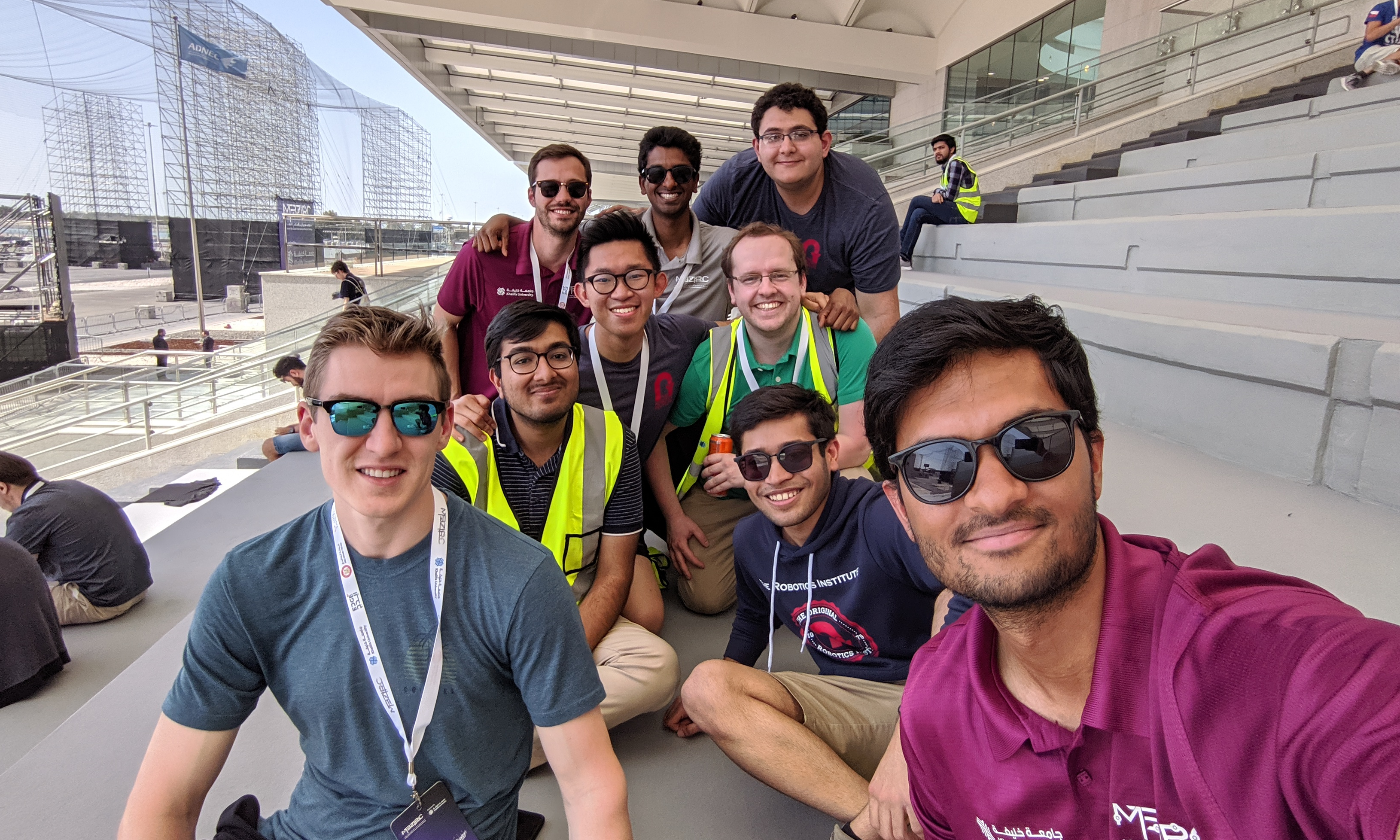As part of my role as a Systems/Software Engineer at CMU’s AirLab, I worked on the Mohamed Bin Zayed International Robotics Competition, Challenge One, where I worked on systems, perception, planning, and controls.
The Mohamed Bin Zayed International Robotics Competition (MBZIRC) seeks to exhibit the current state-of-the-art in real-world autonomous multi-robot systems. Organized by Khalifa University, the competition is held every two years with $5M in prize money and team sponsorship. Teams from around the world, including top robotics research universities and companies, compete over a 3-day period and are judged by a panel including robotics researchers. From the MBZIRC website:
Robotics has the potential to have an impact that is as transformative as the internet, with robotics technology poised to fuel a broad range of next-generation products and applications in a diverse array of fields. Robotic competitions in the past few decades have been a catalyst that has accelerated the rate of technological advancements in the field of robotics and autonomous systems.
MBZIRC aims to provide an ambitious, science-based, and technologically demanding set of challenges in Robotics, open to a large number of international teams. It is intended to demonstrate the current state of the art in robotics in terms of scientific and technological accomplishments, and to inspire the future of robotics.
Similar to other major competitions, the MBZIRC aims to provide an environment that harbours innovation and technical excellence, while encouraging spectacular performance with robotics technologies.
Challenge Description
Challenge 1 aims to tackle the problem of airspace safety with both static and dynamic actors. The task includes autonomously popping balloons placed randomly throughout an arena and catching a ball hanging from a drone that is flying overhead. This must be done with multiple UAVs.
Challenge 2 tackles the problem of autonomous construction with aerial and ground robots. UAVs must pick blocks up from a pattern and place them on an elevated structure. The UGV must pick up blocks and place them on a designated placement pad.
Challenge 3 focuses on firefighting with aerial and ground robots. Fire blankets must be placed on simulated fires on the ground and water must be injected into real fires on the outside of a three-story building. The Grand Challenge comprises of tasks from all three challenges performed together, with a limited number of robots operating at any given time.
Details of all challenges can be found here.
Results
Challenge 1: 8th place, 5th highest autonomous-mode score
Challenge 2: 4th place
Challenge 3: 16th place
Grand Challenge: 7th place (5th for Challenge 1 tasks, 9th for Challenge 2 tasks, and 4th for Challenge 3 tasks)
Key achievements
-
Challenge 1: autonomously popped all balloons and successfully servoed towards ball
-
Challenge 2: one of only five teams to autonomously pick up and place a block with a UAV
-
Challenge 2: successfully accomplished six autonomous UAV block pickups in 25 minute period
-
Challenge 3: autonomously shot most water onto outdoor fire with a UAV; only team to do so on a target which had the additional wind disturbance
-
Challenge 3: only team to autonomously fly inside building (through 2nd story window)
The Team

This project is a collaboration between the AirLab and the Intelligent Autonomous Manipulation (IAM) Lab and includes students from multiple programs.
PIs
Sebastian Scherer (AirLab)
Oliver Kroemer (IAM)
Students
Anish Bhattacharya (student lead); Akshit Gandhi; Shubham Garg; Ganesh Iyer; Noah LaFerriere; Parv Parkhiya; Lukas Merkle; Andrew Saba; Rohan Tiwari; Stanley Winata; Karun Warrior
Special Thanks
Yaoyu Hu; Cameron Kisailus; Valmiki Kothare; Jay Maier; Lorenz Stangier; Wenshan Wang; Kevin Zhang
In the media
The @CMU_Robotics team placed 7th overall at @mbzirc last week. Highlights included spraying more water on a target autonomously than any other team. Autonomous block-stacking and target interceptions were other strengths. Thanks for representing @CarnegieMellon so well. pic.twitter.com/wPRuXtwlAw
— CMU School of Computer Science (@SCSatCMU) March 6, 2020